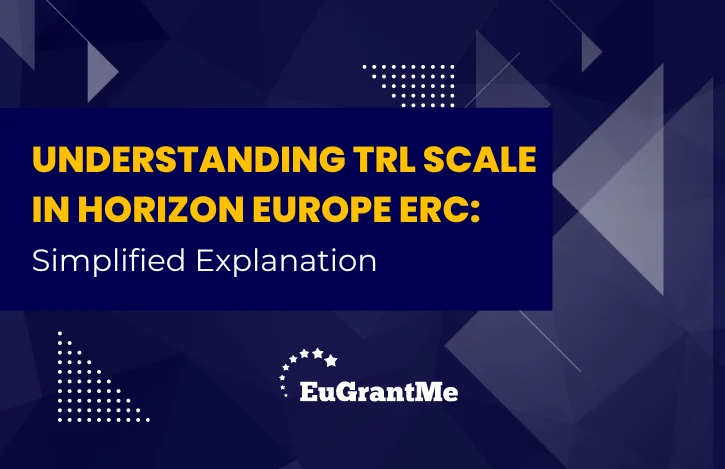Navigating the intricacies of Horizon Europe ERC projects involves understanding various frameworks and metrics, including the Technology Readiness Level (TRL) scale. In this article, we’ll provide a simplified explanation of the TRL scale in Horizon Europe ERC, helping researchers grasp its significance and application.
What is the TRL Scale in Horizon Europe ERC?
The Technology Readiness Level (TRL) scale is a method used to assess the maturity of technologies or research projects, indicating their readiness for implementation or commercialisation. In the context of Horizon Europe ERC (European Research Council) projects, the TRL scale serves as a framework for evaluating the readiness of research ideas or innovations proposed by applicants.
Understanding TR Levels
The TRL scale consists of nine levels, ranging from TRL 1 (basic principles observed) to TRL 9 (actual system proven in operational environment). Each level represents a different stage of technological development, with higher levels indicating greater maturity and readiness for implementation. Understanding the characteristics and requirements of each TRL level is essential for researchers participating in these projects.
Application of TRL in Horizon Europe ERC
In Horizon Europe ERC projects, the TRL scale is used to assess the feasibility and potential impact of research proposals. Applicants are expected to indicate the current TRL of their proposed research idea or innovation and provide a rationale for their assessment. Additionally, applicants must outline a roadmap for advancing the project to higher TRL levels throughout the duration of the project.
Assessing TRL in Research Proposals
When assessing TRL in research proposals, reviewers consider various factors, including the novelty and innovation of the proposed research, the availability of supporting evidence or preliminary data, and the feasibility of achieving the proposed TRL advancements within the project timeline. Applicants are encouraged to provide clear and convincing arguments to justify their proposed TRL assessment and roadmap.
Importance of TRL in Horizon Europe ERC Evaluation
The TRL scale plays a crucial role in the evaluation of Horizon Europe ERC proposals, helping reviewers assess the feasibility, impact, and potential risks of proposed research projects. By indicating the current TRL and outlining a roadmap for advancement, applicants demonstrate their understanding of the technological landscape and their ability to translate research ideas into tangible outcomes.
Tips for Addressing TRL in ERC Proposals
To effectively address TRL in proposals, researchers should:
1. Conduct a thorough assessment of the current TRL of the research idea or innovation.
2. Provide clear and compelling evidence to support the proposed TRL assessment.
3. Outline a realistic and achievable roadmap for advancing the project to higher TRL levels.
4. Clearly communicate the potential impact and significance of the proposed research at each TRL level.
Conclusion: Navigating the TRL Scale
In conclusion, understanding the TRL scale is essential for researchers participating in Horizon Europe ERC projects. By grasping the significance of each TRL level and effectively addressing TRL considerations in their proposals, researchers can enhance the credibility and competitiveness of their projects. With clear communication and strategic planning, researchers can navigate the TRL scale with confidence, unlocking the full potential of their research ideas and innovations in Horizon Europe ERC projects.
At EuGrantMe, we are passionate about fostering innovation and empowering ambitious minds to flourish. Our mission revolves around providing top-notch grant writing services for the EIC Accelerator and Horizon grants in Europe, enabling our customers to unlock the full potential of their ground-breaking ideas.
Do you have a project to turn into reality?
Contact us!


